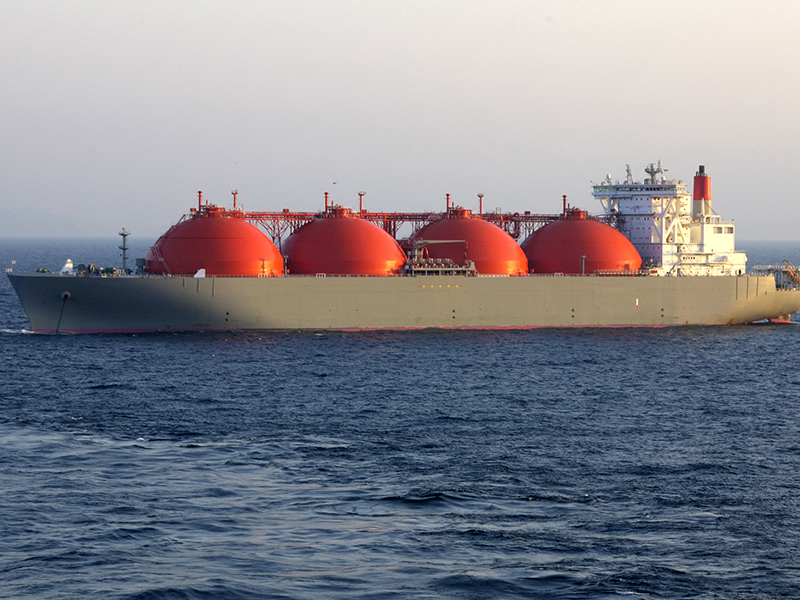In this episode, we talk about natural gas and liquified natural gas specifically. We discuss what U.S. LNG exports mean for gas prices domestically and our status as the world’s largest exporter of LNG.
The U.S. becoming the largest LNG exporter in 2021 with a peak capacity of 10.8 Bcf/day, provides a new outlet for domestic natural gas production. This should provide support to natural gas prices in the U.S. and as a result will benefit royalty owners.
In this episode, we discuss this and the recent letter from New England senators asking the DOE to limit LNG exports to prevent gas prices from rising further. Instead, we talk about how supply and demand will help naturally balance out prices and how LNG exports can be used to support our allies in Europe from Russian natural gas supply disruptions.
Be sure to also subscribe on Apple Podcasts via the link above and please leave us an honest rating and review. We read every one of them and sincerely appreciate any feedback you have. To ask us a question to be featured on an upcoming episode, please leave a comment below or send an email to feedback@mineralrightspodcast.com.
What is LNG?
Liquefied natural gas (LNG) is natural gas that has been cooled to a liquid state (liquefied), at about -260° Fahrenheit, for shipping and storage. The volume of natural gas in its liquid state is about 600 times smaller than its volume in its gaseous state in a natural gas pipeline. This liquefaction process, developed in the 19th century, makes it possible to transport natural gas to places natural gas pipelines do not reach and to use natural gas as a transportation fuel.
Why Are LNG Exports Important For the US?
LNG exports increase the markets available to sell domestically produced natural gas. Where natural gas pipelines are not feasible or do not exist, liquefying natural gas is a way to move natural gas from producing regions to markets, such as to and from the United States and other countries. Asian countries combined account for the largest share of global LNG imports. LNG export facilities receive natural gas by pipeline and liquefy the gas for transport on special ocean-going LNG ships or tankers. Most LNG is transported by tankers called LNG carriers in large, onboard, super-cooled (cryogenic) tanks. LNG is also transported in smaller containers that can be placed on ships and on trucks. At import terminals, LNG is offloaded from ships and is stored in cryogenic storage tanks before it is returned to its gaseous state or regasified. After regasification, the natural gas is transported by natural gas pipelines to natural gas-fired power plants, industrial facilities, and residential and commercial customers.
According to a recent Reuters article: “The U.S. Energy Information Administration projects U.S. LNG exports will reach 11.5 billion cubic feet per day (bcfd) in 2022. That would account for roughly 22% of expected world LNG demand of 53.3 bcfd next year, according to analysts at Goldman Sachs and would outpace both Australia and Qatar, the two largest exporters at present.”
Why is this happening?
To break down the reasons it is helpful to take a step back and look at the global supply and demand situation.
According to the EIA, U.S. LNG exports increased in the first half of this year as international natural gas and LNG spot prices increased in Asia and Europe due to cold weather. Rising global LNG demand once COVID-19 restrictions began to ease, as well as continuous unplanned outages at LNG export facilities in several countries (including Australia, Malaysia, Nigeria, Algeria, Norway, and Trinidad and Tobago), also contributed to increased U.S. LNG exports.
In Asia, colder-than-normal winter temperatures led to increased demand for spot LNG imports. Natural gas demand in the spring continued to rise amid low post-winter inventories, which contributed to unseasonably high natural gas prices. The high prices prompted a higher demand for more flexible LNG supplies, particularly from the United States.
In Europe, natural gas storage inventories were also low following a cold winter. Increasingly hot temperatures in May and June and greater natural gas demand from the electric power sector contributed to high natural gas spot prices. Europe’s natural gas spot prices have historically been lower than prices in Asia; however, this year, Europe’s natural gas prices are tracking Asia’s spot LNG prices more closely to attract flexible LNG supplies from around the world to refill storage inventories.
So, in essence, higher natural gas prices in Europe and Asia have created an arbitrage opportunity for US LNG companies.
The U.S. Henry Hub natural gas benchmark and U.S. LNG spot market prices have been lower than prices for international natural gas and spot LNG this year. This price difference has supported record volumes of U.S. LNG exports. U.S. LNG exports also increased because of new export capacity added in 2020. The final liquefaction units were commissioned at Freeport, Cameron, and Corpus Christi LNG, and the remaining small-scale units were placed in service at Elba Island LNG. The new units increased total U.S. LNG export capacity by a combined 2.7 Bcf/d for a total peak capacity of 10.8 Bcf/d.
Historically, US natural gas prices have lagged global natural gas prices due to a glut of natural gas here in the US but up until a few years ago, only limited LNG export capacity. SO as a result, natural gas prices remained depressed for the past decade following the rapid increase in domestic natural gas production as a result of the shale revolution.
Outlook for U.S. LNG Exports and What This Means for Gas Prices
Higher energy prices have been top of mind for U.S. consumers with high inflation and rising oil and natural gas prices. In a recent letter from Democratic senators to the US Energy Secretary Jennifer Granholm, they urge her to limit US LNG exports to help ease prices. Here’s an excerpt from that letter:
“As families across the country continue to face steep residential energy and heating costs, we urge you to take swift action to limit U.S. natural gas exports and examine their impact on domestic energy prices. While we strongly support the administration’s commitment to advancing the deployment of renewable energy, we understand that nearly half of all U.S. homes currently rely on natural gas for heat. In its 2021-2022 Winter Fuels Outlook, the U.S. Energy Information Administration (EIA) estimated that energy costs for natural gas-fueled homes will increase by 30 percent over the course of this winter. Homes in colder regions, such as New England and the Midwest, will see even larger increases in their heating bills.” the U.S. Senators said in their letter to U.S. Secretary of Energy Jennifer Granholm.
Letter dated February 2, 2022 from Ten Democratic Senators to the Secretary of Energy
While the Senators recognize the geopolitical factors in the U.S. efforts to ensure non-Russian gas supply to Europe, they also note that “the Administration must also consider the potential increase in cost to American families because of higher export volumes.”
“Therefore, we urge the Department to conduct a review of LNG exports and their impact on domestic prices and the public interest, and develop a plan to ensure natural gas remains affordable for American households. Until such a plan is completed, the Department should consider halting permit approvals of U.S. LNG export facilities,” the Senators wrote in the letter.
Here is a list of the senators who signed this letter: Jack Reed (D-RI), Angus King (D-ME), Elizabeth Warren (D-MA), Ed Markey (D-MA), Debbie Stabenow (D-MI), Tina Smith (D-MN), Richard Blumenthal (D-CT), Patrick Leahy (D-VT), Gary Peters (D-MI), and Sheldon Whitehouse (D-RI).
It is interesting when you take a look at the states that they represent. Two are from Secretary Granholm’s home state of Michigan, and the rest are from New England states. The irony of this is really quite interesting. I say this because these same senators are blaming US LNG exports on higher gas prices, especially in New England as they mentioned in their letter. The US has the largest source of gas in the Marcellus and Utica formations in Pennsylvania, West Virginia, and Ohio which we covered in our overview of the Appalachian Basin in Episode 64.
New England states are cut off from this gas by New York who refused to allow pipelines to be built across that state to deliver low cost domestic gas to New England. Instead, we see these states having to import LNG into Boston Harbor from thousands of miles across the ocean from other countries like Russia.
To this point, the Everett regasification terminal near Boston, Massachusetts, receives most U.S. LNG imports. In fact the EIA states: “New England states: Connecticut, Maine, Massachusetts, New Hampshire, Rhode Island, and Vermont, may have significant pipeline constraints when heating demand increases substantially during periods of very cold weather. LNG imports help to meet natural gas demand in New England because the region currently has limited pipeline interconnections with the Northeast and other U.S. natural gas producing regions.”
If lowering gas prices were really the goal of these senators, they would be lobbying their colleagues in NY State to allow new pipelines to be built from Appalachia to New England rather than imposing bans that perpetuate the objectively higher carbon emissions resulting from burning bunker fuel to power a LNG tanker from Russia to Boston Harbor.
Unfortunately, this type of political rhetoric is misleading if not intentionally damaging to US Energy independence and US consumers.
What do US LNG Exports Mean for U.S. Natural Gas Prices?
From a free-market economic perspective, prices are determined by supply and demand (barring any government interference). Higher LNG export capacity in the US provides an additional demand for natural gas that is produced in the US. This higher demand results in higher prices for natural gas, assuming natural gas supply stays constant. Of course, higher prices will tend to incentivize producers to drill more wells to take advantage of this and an increase in supply will tend to moderate price increases or cause prices to fall, depending on how much additional gas is brought to market.
Like we discussed in Episode 130 around the boom and bust cycles for crude oil prices, the same gyrations in price are common for natural gas.
Resources Mentioned in This Episode
- Democrat Senators Are Trying To Limit US LNG Exports For All The Wrong Reasons | OilPrice.com
- US Senators Want To Put Brakes On LNG Exports To Curb Domestic Energy Bills | OilPrice.com
- US Senators to DOE: Don’t Let Domestic Natural Gas Producers Chasing Higher Prices Overseas Leave US Consumers with Bigger Energy Bills This Winter | Senator Jack Reed
- US liquefied natural gas exports grew to record highs in the first half of 2021 – Today in Energy – US Energy Information Administration (EIA)
- North American LNG Export Terminals
- US to be world’s biggest LNG exporter in 2022 | Reuters
- MRP 64: Appalachian Basin Overview
- MRP 130: What Causes an Oil Price Bust and Will History Repeat Itself?
Thanks for Listening!
To share your thoughts:
- Leave a comment or question below (we read each one and your question may be featured in a future episode)!
- Ask a question or leave us feedback via email or voicemail: (720) 580-2088.
To help out the show:
Click the Apple Podcasts Logo Above to leave us a rating & review. It really helps us reach those that need to hear this information and only takes a minute. We greatly appreciate it! Plus, you can get a shout out on a future episode!
Thanks again – until next time!




